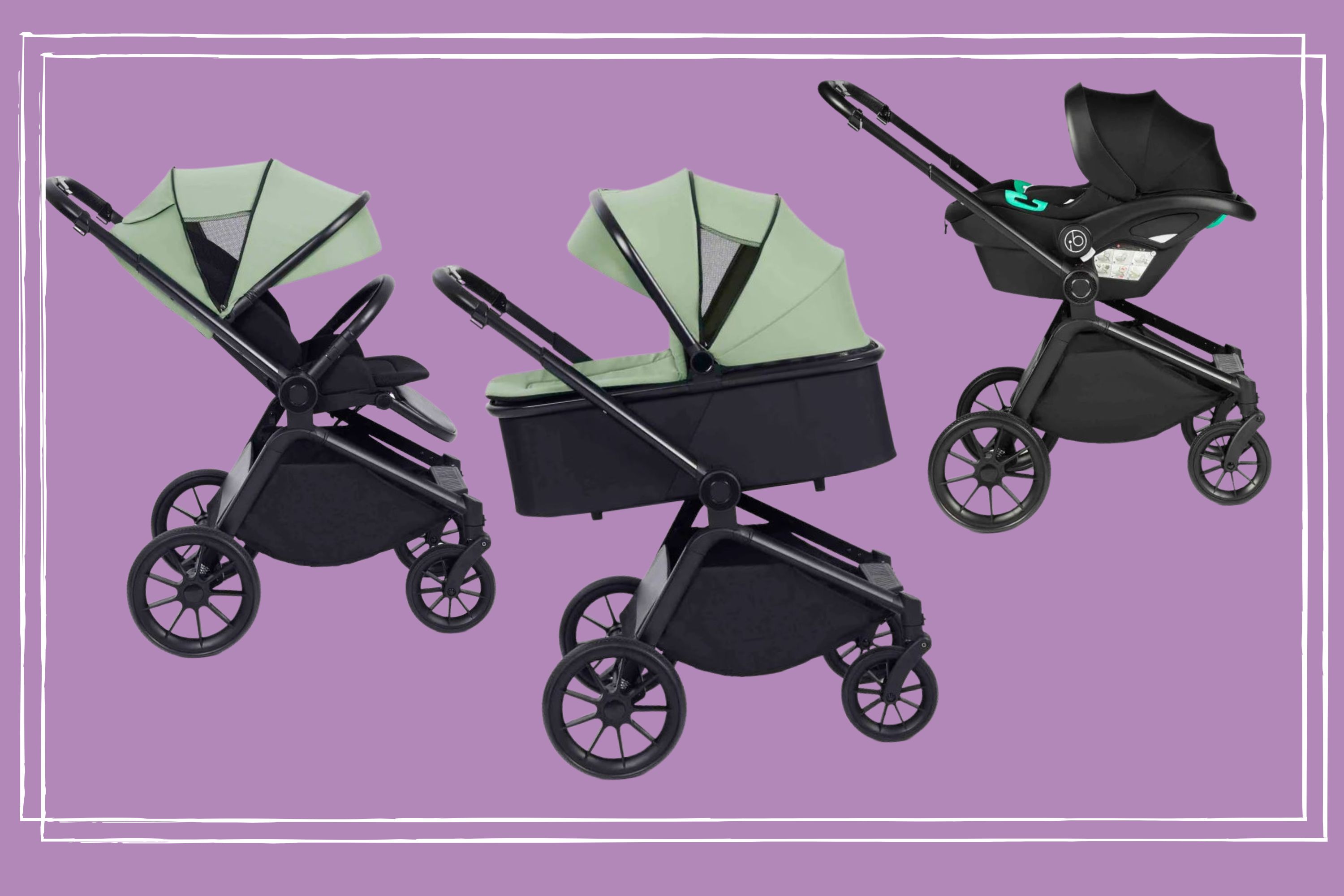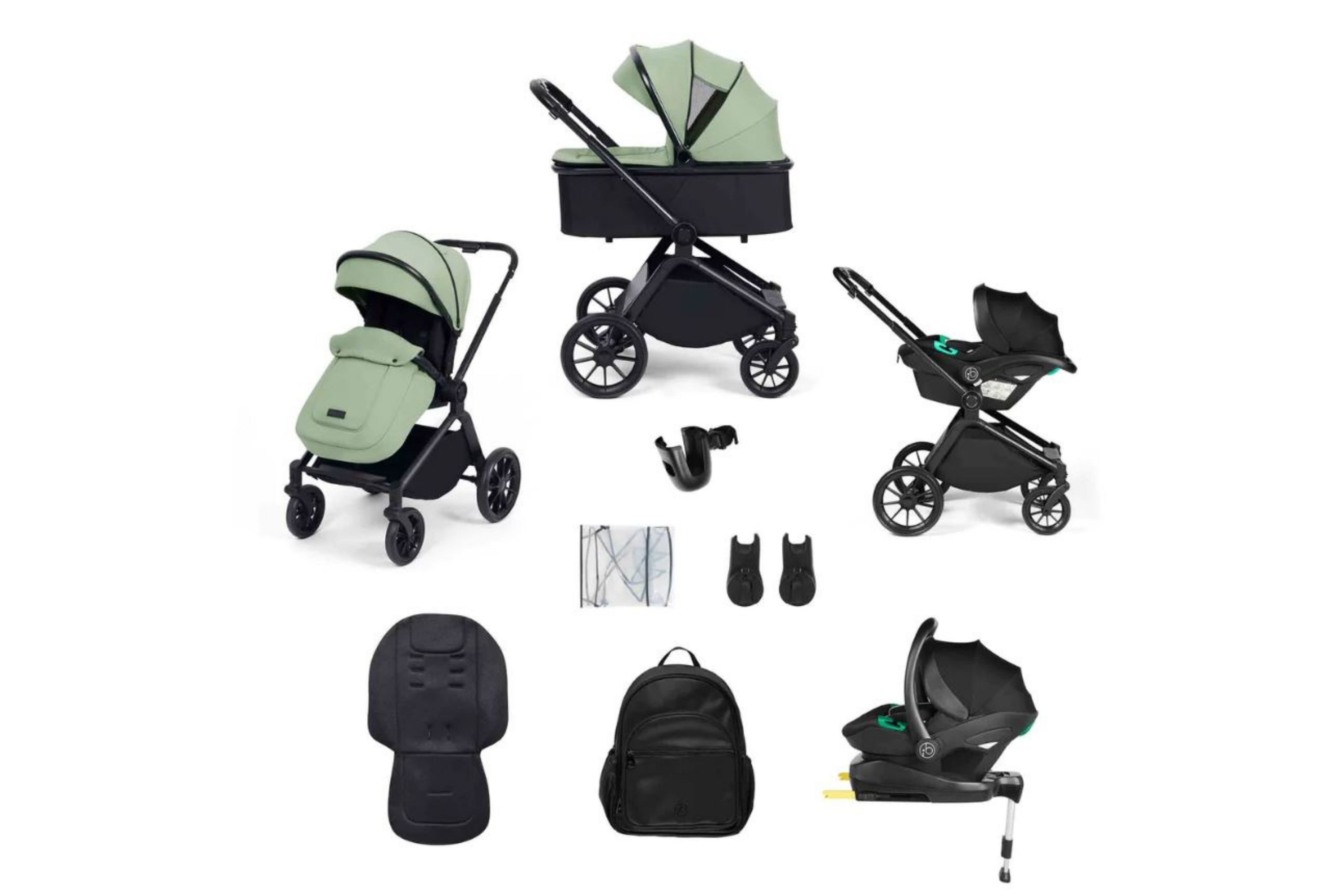What is a travel system? Baby gear experts explain how they work - and what’s included
Experts decode what is a travel system and highlight the features to look out for

Heidi Scrimgeour

If you're shopping for a pram for your baby and find yourself wondering 'what is a travel system' then you've come to the right place - in this article we'll explain why you might need one.
What's the best travel system
The Ickle Bubba Altima (£699 at Ickle Bubba) is the best travel system to buy, based on feedback from parent reviewers who tested out several newborn prams for our buying guide. It folds remarkably compactly and all the component parts are included in the price. It comes with Ickle Bubba’s Stratus i-Size Car Seat and ISOFIX base, and our tester found she was able to transfer her baby from car seat to cot without waking him; a feature she describes as 'game-changing'.
Shopping for the best pram is a minefield, especially for first-time parents. The options - from considering the benefits of a bassinet for newborns to pondering the practicalities of a pram with a detachable car seat - can be overwhelming. Complicating matters further, you're likely to shop for a pram before your baby is born, making it tricky to tell for sure whether you're making the right choice.
But help is at hand; we asked mums and baby gear experts to explain the features of a travel system and outline the benefits and drawbacks so you can decide, with confidence, whether a travel system is right for you and your baby.
What is a travel system?
A travel system is a versatile pram frame that can hold several different seat options interchangeably; a bassinet or carrycot for babies under six months to lie flat, a compatible infant car seat for babies under a year old, and an upright pushchair seat for babies from six months to around three years old.
When you buy a travel system you'll get the following components:
- The pram frame - sometimes called the chassis by retailers
- A detachable bassinet that allows your baby to lie flat between birth and six months
- A detachable infant car seat, suitable from birth to around 12 months
- A detachable pushchair seat for babies from six months to around three years old
- Adaptors that modify the chassis so it can safely hold each component

"Travel systems are suitable from birth and can be used with a compatible baby car seat, as well as a carrycot or a lie-flat seat, and then when your baby is ready, at around six months old, you can swap to using an upright pushchair seat," explains Alison Potter, Baby & Child Expert at Which? and The Baby Show.
"There are lots of different packages available, including pushchairs that come with the carrycot or car seat - or both - included, along with other accessories like a rain cover or a change bag. Think carefully about your needs and compare prices to work out which retailer offers the best value for money. Also, check whether you’ll need adaptors to fit the carrycot or car seat and whether they come with the pushchair or need to be bought separately."
Parenting advice, hot topics, best buys and family finance tips delivered straight to your inbox.
What are the advantages of travel systems?
The big advantage of a travel system is convenience. "Travel systems make it much easier to transport sleeping babies without disturbing them too much, as you can move them from car to pushchair without removing them from the car seat," adds Alison.
"Imagine you have a baby and you do the school run every morning with older siblings; with a travel system, you could pop your baby into their car seat for the drive to school and then, for the walk to the school gates, just click the car seat onto your pram chassis and off you go," adds Heidi Scrimgeour, Consumer Editor at GoodtoKnow.
"Once you're back at the car, you can easily secure the car seat back in your vehicle again - all without having to wrestle your baby in and out of different buckles multiple times. Younger babies often fall asleep quickly in the car seat, so using a travel system also means not disturbing them when you reach your destination - you can simply lift the car seat out of your vehicle and carry it with you indoors."
Your baby can safely nap in a carrycot for an extended period since it lies flat which supports optimal breathing, but Alison points out that different rules apply to car seats. "You shouldn't leave a baby under four weeks old in a baby car seat for longer than 30 minutes at a time. And from six months onwards, for no more than two hours. This doesn’t apply if it’s a lie-flat car seat, though."
Are all pushchairs travel systems?
No, not all pushchairs are travel systems.
Travel system is the term used to describe a specific type of pushchair that can hold different seat attachments. Not all pushchairs have this flexibility and you cannot attach a baby car seat to all pushchairs - only to a compatible travel system.

The Ickle Bubba Altima travel system, pictured with all the components that are included in the price.
"The clue is in the name; a travel system is a pushchair designed to make different methods of travel with your baby easier, via different seat attachments that you can swap on and off the frame as needed," adds Heidi. "It's a bit like the difference between cribs and bedside cribs. Both serve the same purpose - keeping a sleeping baby safe - but only bedside cribs are specifically designed to be attached to a compatible bed, and you shouldn't attempt to do that with a standard crib that doesn't have that functionality built into its design."
Travel systems can also be used without the bassinet or car seat as standard pushchairs - which is good to know if you spot one you like but don't need the extras. If the bassinet and car seats are sold separately and not part of a bundle, you can opt not to buy them. In that case, you'll have a standard pushchair, but with the potential to use it as a travel system if you purchased the extra components.
You can also buy pushchairs that are only approved for babies over the age of six months. This is usually because the seat doesn't recline flat enough to meet the requirements for a newborn. As they're not suitable from birth, these aren't usually considered travel systems.
Features to consider
Not sure which travel system is right for you? Take these factors into consideration to narrow down your options:
- Value for money: A travel system is generally more expensive than a standard pram or pushchair without bassinet or car seat attachments - but affordable bundles exist so shop around for a good deal like the Graco Transform 2-in-1 (£200, Amazon).
- Lifestyle: A travel system is indispensable if you drive because of how easily you can move your baby between the car and pushchair. Otherwise, consider a lightweight pushchair like Babyzen YoYo (£399, Mamas & Papas), featured in our best travel strollers guide.
- Ease of use: A travel system can be bulky because of how robust the frame needs to be to handle several different attachments. So check how compact it is when folded - do and make sure it will fit in your car boot before you buy.
- Basket: A spacious basket is a godsend as you'll end up stashing everything in it from your change bag to the day's groceries. Check you can fit a couple of large packets of nappies in there plus a loaf and some milk!
- Future-proofing: If you're a first-time parent hoping to have more children, pick a travel system that will grow with your family - like the iCandy Orange 3 Crush (was £1,149, now £629 at Kiddies Kingdom) ( which has 30 different seat configurations and can accommodate siblings!
As well as all the component parts of a travel system, factor in any extras that you may need to buy separately. Think rain covers, coffee cup holders, pram toys, sunshades, and change bags. Consider which of these you really need, and which will gather dust in a cupboard. There’s no point buying a rain cover if everyone gets drenched anyway because it takes so long to put on.
“Lots of travel system bundles come with included accessories but you might not need them all," says mum and founder of Aurora Birth Club, Georgia Reynolds. “In my opinion, the only essential accessories are a rain cover and a cup holder; you ARE going to need that for your coffee!”
“A large shopping basket and sturdy rain cover were key for me when I had to take my baby out and about in terrible weather,” agrees mum Rebecca Clarke from London. “I had a coffee cup holder too but the road where we live was pretty bumpy, so it tended to spill, and I didn’t use it as much as I thought I would.”
Memory buttons that make it easy to take the seat unit on and off the chassis are super helpful when you've got your hands full. Wheel size and suspension are also really important, and you should think and match these to your terrain and lifestyle.
Another important consideration is whether your family is likely to grow. If you hope to have more children, consider whether the travel system you’re buying can carry a toddler and baby at the same time, and whether you'd prefer a buggy board or an extra seat. The Silver Cross Wave (£1095 at John Lewis) is a good choice in this scenario.
“If you know that you want your child to have a sibling and are leaning towards a gap of two-ish years, something which can convert to a double or is compatible with a buggy board is a very sensible idea and will save you money longer term,” adds Georgia.
How much do they cost?
When thinking about the best travel system for your family, the first decision is always budget. A travel system can cost between £200 and £1,200 and is likely to be one of the most significant purchases you’ll make when you have a baby. The brand you choose will determine the price you pay, because more premium, luxurious items of baby gear come with a higher price tag. If you opt for extras, like an ISOFIX car seat base, this can further increase the price.
Once you’ve considered what you're willing to pay, look at the different configurations available and decide if you'd prefer to buy all the components in one bundle or mix and match elements from different brands; you might like the design of a particular pram but prefer to buy a compatible car seat from another brand because of its particular safety features.
The best deals are usually on 'bundles' with all the various components included in the price. Heidi adds: "You can usually get the frame, bassinet, pushchair seat, car seat, and rain cover all included in one package. The advantage of buying a travel system like this is that you'll have everything you need to get out and about with your baby from day one; you won't have the headache of shopping around for a compatible car seat, for example. Plus, a bundle travel system is likely to be aesthetically pleasing and colour-coordinated, with all the parts designed to match."
On the other hand, if you're not bothered about everything matching but like particular features across different brands, you can opt to buy the component parts of a travel system separately. Just check before you buy that the all items are compatible. Many leading pushchair brands make travel systems but don't manufacture their own car seats, for example, but they're compatible with popular car seat brands instead.
While buying second-hand is a good idea for many baby items, it’s not recommended for a travel system.
How long do travel systems last?
A travel system typically comes with a newborn bassinet which a baby can use until the age of six months. After this, you can transfer them into the pushchair seat, and they can stay in this until they are at least three years old. They're likely to only use the travel system car seat until they are around one year old, after which they will move up to the next stage car seat, which can only be used in your vehicle and not on a pushchair frame.
If you choose to expand your family, you can adapt many travel systems by adding a buggy board for an older child to stand on or even an additional bassinet for a new baby. As time goes on, you will be able to buy extra accessories for your travel system as and when you need them.
“You can use most travel systems for as long as your little one needs to be pushed while out and about,” says Georgia. “It is well worth checking the weight limit of the seat unit before making your final choice. There are lots on the market with 22kg limits, which would give you maximum longevity; my tall 5-year-old is just approaching this weight now! Think also about the seat back height; if either of the baby's parents is particularly tall, looking for a system which has a taller seat will serve you well in the long run.”
Is a travel system worth it? Our verdict
Travel systems are especially useful if you have a car that you’re in and out of a lot, as you can avoid waking a sleeping baby every time you switch between driving and walking.
"If you drive everywhere, a travel system is a great investment that you’re likely to use every day. It will help you feel confident in getting out and about and make life with a baby a little bit easier," adds Heidi Scrimgeour.
"If you don't drive or only use a car very infrequently, there's no need to choose a travel system as you obviously won't make good use of the functionality that lets you attach a car seat to the frame. Instead, choose a standard pram or pushchair or go for a travel system without the car seat included. Then, on the rare occasions where you do need to put your baby in a car seat, you'll just need to remove them from the seat and buckle them into the pram or pushchair."

Georgia runs an antenatal education for parents as they navigate pregnancy, birth and new parenthood and is passionate about ensuring every new parent feels empowered, supported, and prepared for parenthood. She is also a teacher and a mum of two.
If you're looking for more information to help you choose the best pram for your baby, have a look at stroller vs pram - what to know before you buy or to help you choose how much to spend, find out why this mum would never spend more than £400 on a stroller.

Charlotte Duck is an award-winning lifestyle and parenting journalist who writes who regularly writes for Tatler, the Evening Standard, Yahoo, and Hello Magazine about everything from royal hairstyles to fixed-rate mortgages. She was previously Kidswear Editor at M&S and worked in-house at Boden but, while she loves writing about beautiful children's clothes, she has three children who refuse to wear them.
- Heidi ScrimgeourDeputy Editor